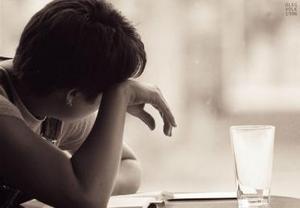The biggest issues for children of divorce involve emotional development. Girls whose parents divorce when they are very young tend to handle the divorce better than boys, though between the ages of nineteen to twenty-three the females may experience a resurgence of negative feelings relating to the divorce, a phenomenon named the “Sleeper Effect” by Wallerstein.
Generally, the younger the child is when the divorce occurs, the quicker he or she will adjust. The beginning may be very difficult for the child, but children of divorce tend to stabilize their emotions. However, some children may experience depression, most all will experience stress, and some may have long-term effects like having a negative outlook on marriage. Still, children whose parents stayed together but had a “high-conflict” relationship had an even worse outlook on marriage.
Most of the literature researched gives little to no supporting evidence that divorce affects social development in children. According to a 2009 study done by Lacey Chandler, her hypothesis that children of divorced parents will have social problems was refuted. Other tests showed that children of divorce may have some behavioral problems, although it is generally boys that have problems rather than girls, but that they will still seek out friends and social interaction. Just as well, education was rarely affected. Children whose parents divorce may mature faster and so may engage in sexual relationships faster but do not show problems with social or scholastic behaviors.
Divorce may have adverse affects on young children. An article from Purdue University asserts that babies do not know what is going on but they are perceptive enough to notice changes are occurring. Toddlers may have a difficult letting go of one parent when going back and forth between houses or going to school. In an expression of stress, toddlers may “loose skills they had learned. For example, some children may lose their toilet-training skills.” Preschool children seeking security may revert back to carrying around a pacifier or stuffed animal. According to the Purdue article, preschool age children “do not always know what is real and what is imaginary” and so they may think often about their parents reuniting.
According to Hazan and Shaver in Romantic Love Conceptualized As an Attachment Process, “When a human or non-human primate infant is separated from its parent, the infant goes through a series of three stages of emotional reactions.” These three stated reactions are: protest, despair, and detachment. Unfortunately this is generally what happens in divorce, as one or both of the parents will inevitably spend less time with the child. First the child may throw tantrums, then become sad and lethargic, and finally attempt to avoid the parent she sees less (see reference 3). What the parents can do to attempt to counteract these effects is remain sensitive to the child’s wants and needs and to give the child attention. In John Bowlby’s Attachment theory, originally from Attachment and Loss, he explains that the more nurturing parent (often but not always the mother) retains the most important bond with the child when he is young (Bowlby, Attachment and Loss). Ainsworth, building on this theory in “Patterns of Attachment”, explains that children will develop one of three types of behaviors after divorce: secure, ambivalent, or avoidant. Ambivalent children show hostility toward the offending parent and avoidant children avoid the offending parent (see reference 2).
Self esteem problems are prevalent in children of divorced parents. Problems stem from the child feeling like the divorce is her fault. Clinical social worker Laura Breitberg explains that if a parent doesn’t send child support, the child may feel that he is not worth the money. Or she may feel that she was not worth her parents staying together. He may then feel that if he had only been a better kid, his parents would have stayed together. This can be made even worse if one parent’s participation in the child’s life decreases significantly. When one parent goes from seeing the child every day to never or every other weekend, for instance, the child will feel like that parent doesn’t care to see her, and so she must not be good enough. Other problems that will lead to a drop in self esteem come from the parents speaking poorly of each other or arguing in front of the child. The child will believe that if, for instance, Mom thinks Dad is a bad person, he must be at least half a bad person as well.
The best possibly action divorcing parents can take is to make sure they both give their child(ren) a lot of attention and love and make sure the child or children know that none of this is their fault.
“The Social and Education Effects of Divorce” [http://clearinghouse.missouriwestern.edu/manuscripts/382.php]
Attachment Theory: “Attachment Styles: An Evolving Taxonomy of Evolutionarily Adaptive and Maladaptive Affectional Bonds” [http://www.personalityresearch.org/attachment.html]
Hazan, C., & Shaver, P. (1987). Romantic love conceptualized as an attachment process. Journal of Personality and Social Psychology, 52, 511-524.
Provider-Parent Partnerships: How Children Experience Divorce [http://www.ces.purdue.edu/providerparent/PDF%20Links/HowChildrenExperienceDivorce.pdf]
“Self Esteem Problems in Children of Divorce” [http://www.cherylh.com/hatchery/JFS/documents/SelfEsteemProblemsinChildrenofDivorce.pdf]


